
The swastika is an ancient religious and cultural symbol, predominantly in various Eurasian, as well as some African and American cultures, now also widely recognized for its appropriation by the Nazi Party and by neo-Nazis. It continues to be used as a symbol of divinity and spirituality in Indian religions, including Hinduism, Buddhism, and Jainism. It generally takes the form of a cross, the arms of which are of equal length and perpendicular to the adjacent arms, each bent midway at a right angle.

Charleston is the capital and most populous city of the U.S. state of West Virginia and the seat of Kanawha County. Located at the confluence of the Elk and Kanawha rivers, the city had a population of 48,864 at the 2020 census and an estimated population of 48,018 in 2021. The Charleston metropolitan area as a whole had an estimated 255,020 residents in 2021, it is the least populous state capital to be the most populous city in a state.

Braxton County is a county in the central part of the U.S. state of West Virginia. As of the 2020 census, the population was 12,447. The county seat is Sutton. The county was formed in 1836 from parts of Lewis, Kanawha, and Nicholas counties and named for Carter Braxton, a Virginia statesman and signer of the Declaration of Independence.

Wheeling is a city in the U.S. state of West Virginia. Located almost entirely in Ohio County, of which it is the county seat, it lies along the Ohio River in the foothills of the Appalachian Mountains and also contains a tiny portion extending into Marshall County. Wheeling is located about 60 miles (96 km) west of Pittsburgh and is the principal city of the Wheeling metropolitan area. As of the 2020 census, the city had a population of 27,062, and the metro area had a population of 139,513. It is the fifth-largest city in West Virginia, and the largest in the state’s Northern Panhandle.
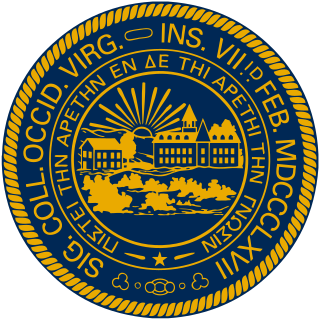
West Virginia University (WVU) is a public land-grant research university with its main campus in Morgantown, West Virginia. Its other campuses are those of the West Virginia University Institute of Technology in Beckley, Potomac State College of West Virginia University in Keyser, and clinical campuses for the university's medical and school at Charleston Area Medical Center in Charleston and the Eastern Division at the WVU Medicine Berkeley and Jefferson Medical Centers. WVU Extension Service provides outreach with offices in all 55 West Virginia counties.

John Edward Kenna was an American politician who was a Senator from West Virginia from 1883 until his death.

The Alabama State Capitol, listed on the National Register of Historic Places as the First Confederate Capitol, is the state capitol building for Alabama. Located on Capitol Hill, originally Goat Hill, in Montgomery, it was declared a National Historic Landmark on December 19, 1960. Unlike every other state capitol, the Alabama Legislature does not meet there, but at the Alabama State House. The Capitol has the governor's office and otherwise functions as a museum.

Droop Mountain Battlefield State Park is a state park located on Droop Mountain in Pocahontas County, West Virginia. The park was the site of the Battle of Droop Mountain, the last major battle of the American Civil War in the state taking place on November 6, 1863. John D. Sutton, a West Virginia private in the Union Army at the battle, became the leader in the movement to create the park when he served in the West Virginia House of Delegates. Dedicated on July 4, 1928, Droop Mountain Battlefield became the first state park in West Virginia.
Melvin Wine was an American Appalachian fiddler from the state of West Virginia. He was a lifelong resident of Copen, in Braxton County, West Virginia.

The West Virginia State Capitol is the seat of government for the U.S. state of West Virginia, and houses the West Virginia Legislature and the office of the Governor of West Virginia. Located in Charleston, West Virginia, the building was dedicated in 1932. Along with the West Virginia Executive Mansion it is part of the West Virginia Capitol Complex, a historic district listed on the National Register of Historic Places.
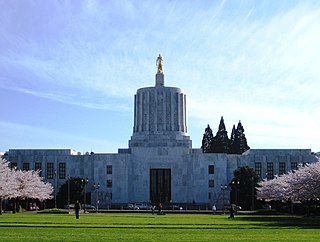
The Oregon State Capitol is the building housing the state legislature and the offices of the governor, secretary of state, and treasurer of the U.S. state of Oregon. It is located in the state capital, Salem. Constructed from 1936 to 1938 and expanded in 1977, the current building is the third to house the Oregon state government in Salem. The first two capitols in Salem were destroyed by fire, one in 1855 and the other in 1935.

The Battle of Blair Mountain was the largest labor uprising in United States history and the largest armed uprising since the American Civil War. The conflict occurred in Logan County, West Virginia, as part of the Coal Wars, a series of early-20th-century labor disputes in Appalachia. Up to 100 people were killed, and many more arrested.

The Illinois State Museum features the life, land, people and art of the State of Illinois. In addition to natural history exhibits, the main museum in Springfield focuses on the state's cultural and artistic heritage. Exhibits include local fossils and mining, household displays from different historic periods, dioramas of Native American life, archaeological and ethnographic artifacts, and a collection of glass paperweights.

Chief Logan State Park is located on 3,988 acres (1,614 ha) about 4 miles (6.4 km) north of Logan in Logan County, West Virginia, United States. The park, the town and the county were all named after Chief Logan, a Mingo Native American leader who lived in the region before the American Revolutionary War. Each summer the Liz Spurlock Amphitheater at Chief Logan State Park is the site for outdoor dramas, including the historical drama "The Aracoma Story" about Shawnee tribal members who lived at the present-day location of the town of Logan. The outdoor drama theater produces the Aracoma story and two to three other plays or musicals every year.
The Fiesta Tableware Company is a ceramics manufacturer located in Newell, West Virginia, United States. Established in 1871, it is widely known for its Art Deco glazed dinnerware line, Fiesta. In 2002, The New York Times called Fiesta "the most collected brand of china in the United States".
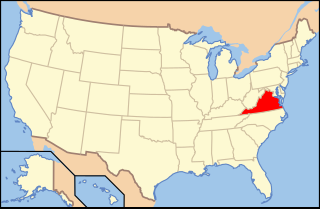
The following is an alphabetical list of articles related to the United States Commonwealth of Virginia.
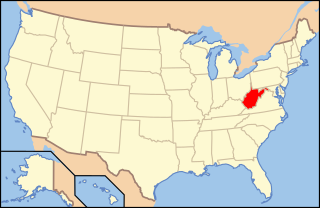
The following is an alphabetical list of articles related to the U.S. state of West Virginia.
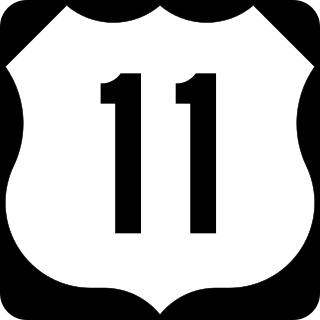
U.S. Route 11 (US 11) in the U.S. state of West Virginia spans 26.2 miles (42.2 km) across the Eastern Panhandle region. US 11 enters the state near Ridgeway and crosses into Maryland just south of Williamsport. The highway closely parallels Interstate 81 (I-81) for its entire length.

Ceramic art is art made from ceramic materials, including clay. It may take varied forms, including artistic pottery, including tableware, tiles, figurines and other sculpture. As one of the plastic arts, ceramic art is a visual art. While some ceramics are considered fine art, such as pottery or sculpture, most are considered to be decorative, industrial or applied art objects. Ceramic art can be created by one person or by a group, in a pottery or a ceramic factory with a group designing and manufacturing the artware.


















